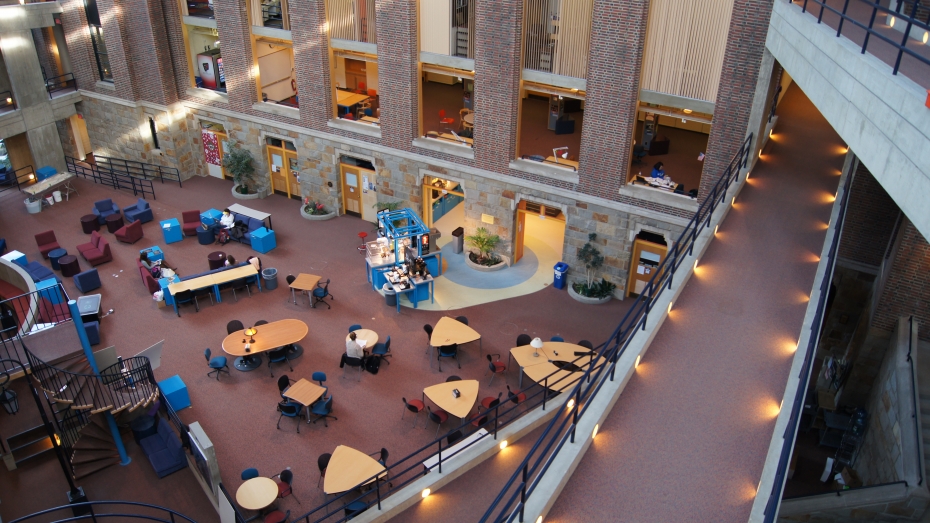 photo from Google Maps, acquired 9/12/12
photo from Google Maps, acquired 9/12/12
The Wellesley College Science Center comprises four buildings:
The Margaret C. Ferguson Greenhouses, built in 1925, and renovated in 1982.
Sage Hall was built originally to house the Botany and Zoology programs, in 1927 and 1931, respectively. It was designed by the same architect who designed Green Hall (Day and Klauter).
The L-wing (the Laboratory wing), opened in 1977, and was designed by Perry, Dean, Stahl and Rogers. The E-wing (the East wing), opened in 1991, was also designed by Perry, Dean, Stahl and Rogers.
Sage Hall was remodeled in 1955-1956 to provide space for geography and geology, as well as space for a combined library to serve those departments and the biological sciences. It was renovated again for office and classroom space in the 1970's as the L-wing was built to create an integrated Science Center.
The completion of the L-wing in 1977 realized a vision that was developed very early in College history - the creation of an integrated home for the sciences (including mathematics and psychology), was a goal that took nearly a century to bring to fruition. The dream then, as now, was to enable interdisciplinary activity among all the sciences. A primary design goal was to provide "flexible" space for the sciences, which resulted in open teaching and research labs. The creation of a four-story (60') atrium space connected the L-wing to Sage Hall, by enclosing the exterior wall of Sage as the interior wall of the atrium (called the Focus). Architecturally, this represented one of the first times a major atrium was created in a science complex. The 100' x 300' long building houses teaching and research laboratories, a central stockroom and machine shop, and an animal facility. A mechanical penthouse sits atop the building from which services "drop" to the laboratories. A two-story science library is situated at the ground level and affords views to the open Science Center meadow and more distant Galen Stone Tower.
The E-wing opened in 1991, to house Physics and Computer Science, and to provide additional office space as the faculty expanded. Building the E-wing enabled research labs in the L-wing to expand to accommodate the increased focus on research by both faculty and students in the sciences.
The Focus (atrium area) housed the administrative function of the Science Center from the time it opened until February 2011, when it was converted to an open space for community use. The Faroll Focus, named in recognition of the generosity of alumna Léonie Faroll '49, now serves as a community gathering space, a student study space, and the home of the Leaky Beaker café.

